| Large eddy simulations (LES) for an underexpanded sonic jet in quiescent flow are being performed. The simulations reproduce the conditions of the experiment where single-shot Schlieren imaging of the jet is used to investigate the instantaneous and time-averaged steady-state structure of the barrel shock and the jet far-field growth rate. A pseudo-time sequence of the formation of the barrel shock that tracks the jet injection transient (following the response of the jet actuation mechanism) is also constructed. In the simulations two different boundary conditions for the jet injection are considered: an instantaneous pressure increase and a pressure increase following the time evolution of the jet plenum stagnation pressure measured in the experiment. Applying an instantaneous pressure increase requires a smaller simulation time and allows to compare the shock structure of the fully developed jet , while imposing the pressure increase as a function of time allows to compare the transient formation of the jet structure. |
| |
| |
| Objectives |
The objective of the simulations is two-fold:
- To compare the shock structure obtained from LES with the Schlieren images as part of the validation process for the simulation of the jet injection
- To support investigating the transient effect of the jet injection mechanism
|
| |
| |
| Approach |
| The explicit spatially-filtered compressible Navier-Stokes solver Charles is used. The unstructured finite volume method uses a blended central-upwind scheme in smooth flow regions to minimize artificial damping of resolvable turbulence scales and switches to a 3rd-order WENO method and an HLCC approximate Riemann solver to capture discontinuities. Time discretisation is performed with an explicit third order Runge Kutta scheme. |
| |
| |
| Results |
| Instantaneous pressure increase |
| These simulations impose an instantaneous pressure increase, allowing to compare the shock structure of the fully developed jet from the LES and experiments. An instantaneous contour of the Mach number is shown below, together with a comparison of the time trace of the jet stagnation pressure imposed in the simulation and measured in the esperiment. An indication of the time at which a constant Mach disk height is obtained is also provided. |
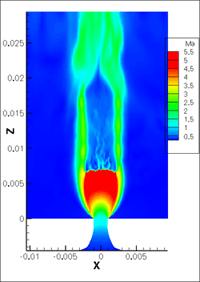 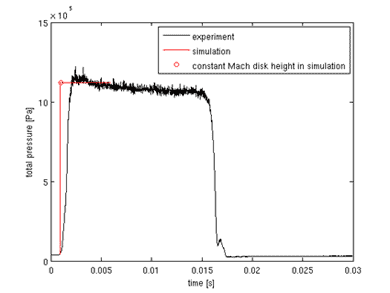 |
| |
| |
| The following animation compares a Schlieren image and an instantaneous contour of the density gradient obtained from LES, showing a good agreement in the shock structure. |
| |
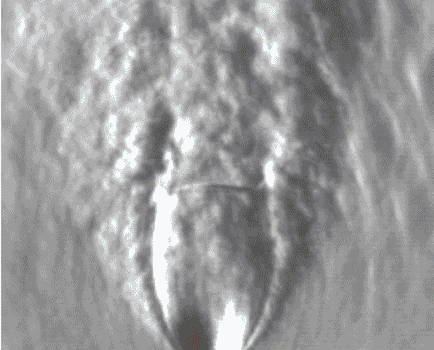 |
| |
| |
| Pressure increase as a function of time |
| The second set of simulations imposes the increase in pressure as a function of time, corresponding to the time trace of the jet plenum stagnation pressure measured in the experiment. A comparison with Schlieren images of the jet development will be performed in the near future. |
| |
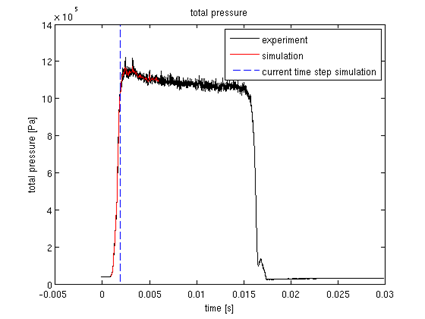 |
| |
| Underexpanded jet formation - Schlieren imaging |
| The sequence below shows the formation of the underexpanded Hydrogen jet issued into still air (pressure ratio of 28) as a function of time (from the beginning of the injection) as captured by Schlieren imaging. Each row in the sequence refers to the instantaneous (exposure 500 ns), line-of-sight integrated shock structure as imaged using the Schlieren method. The sequence on the left shows the shock structure as rendered by an horizontal knife edge which emphasizes vertical density gradients, whereas the sequence on the right shows the corresponding shock structure as rendered by a vertical knife edge which emphasizes horizontal density gradients. Note that the sequence below is constructed from a set of independent, single-shot Schlieren images captured by time-delaying the imaging system from the initiation of the fuel injection. The average jet stagnation pressure as a function of time is shown in the time-plot at the end of the sequence (the red dots identify the instant in time at which the images of the sequence below are reported). The blue curves on this plot show the standard deviation of the measured jet stagnation pressure (measured in the injector plenum with a fast-response pressure transducer over 37 independent realizations). |
| |
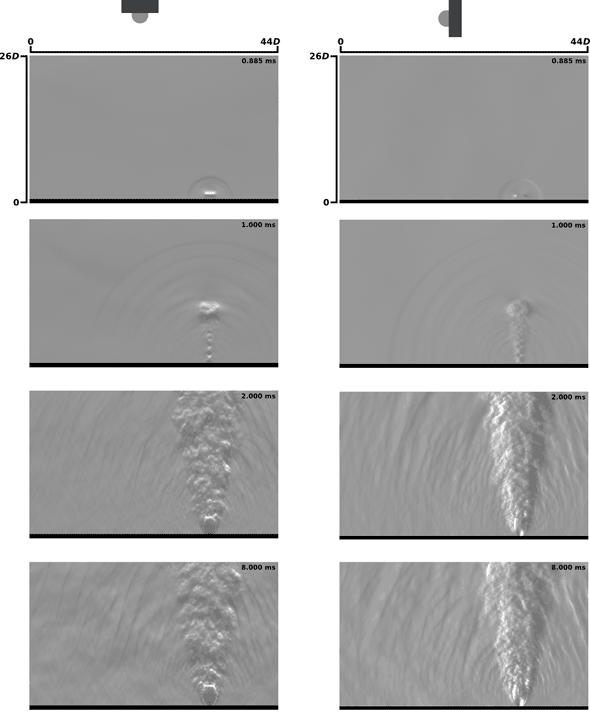 |
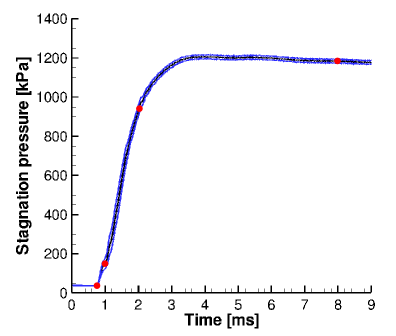 |
| |
| |
[an error occurred while processing this directive]










